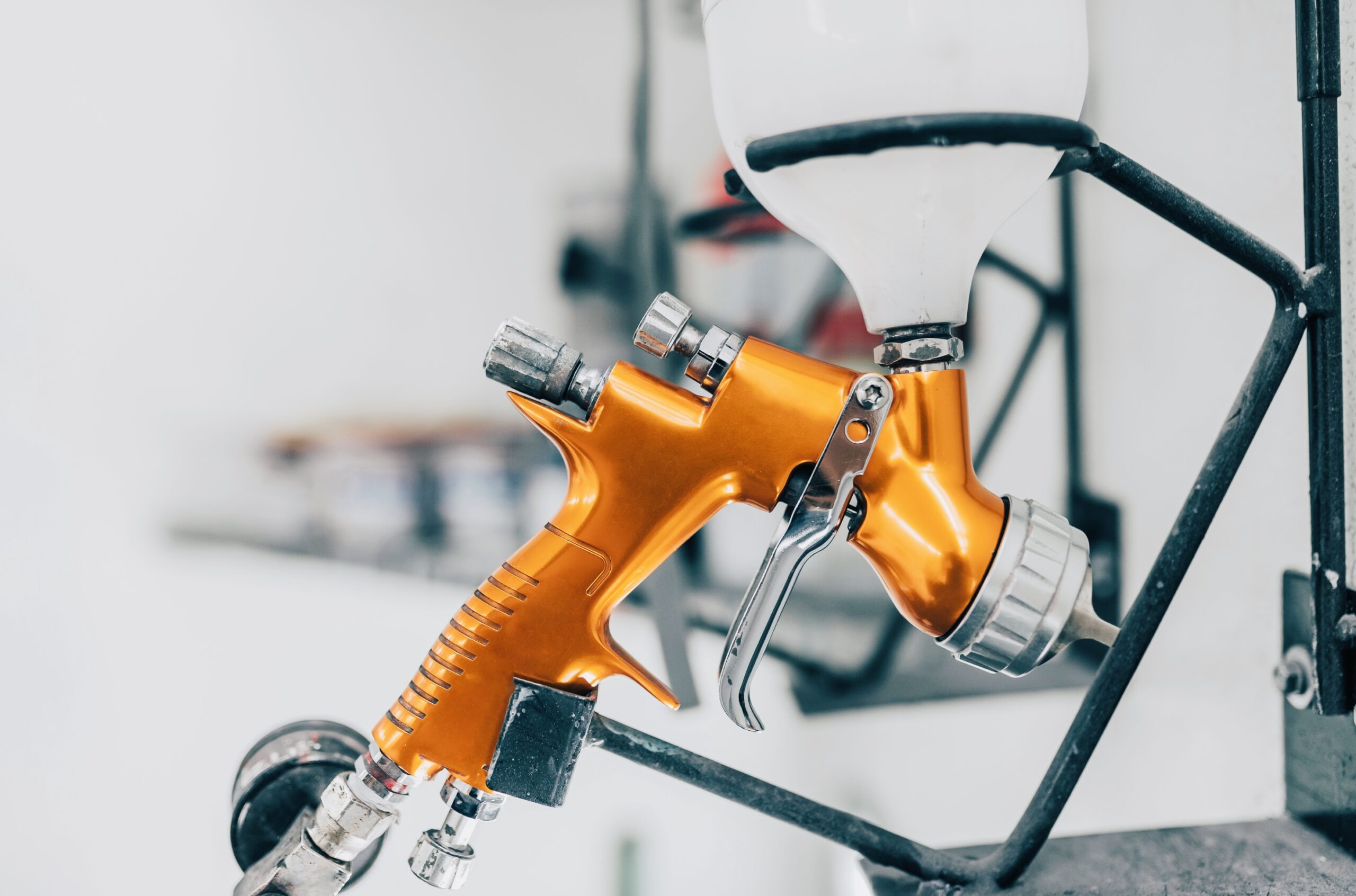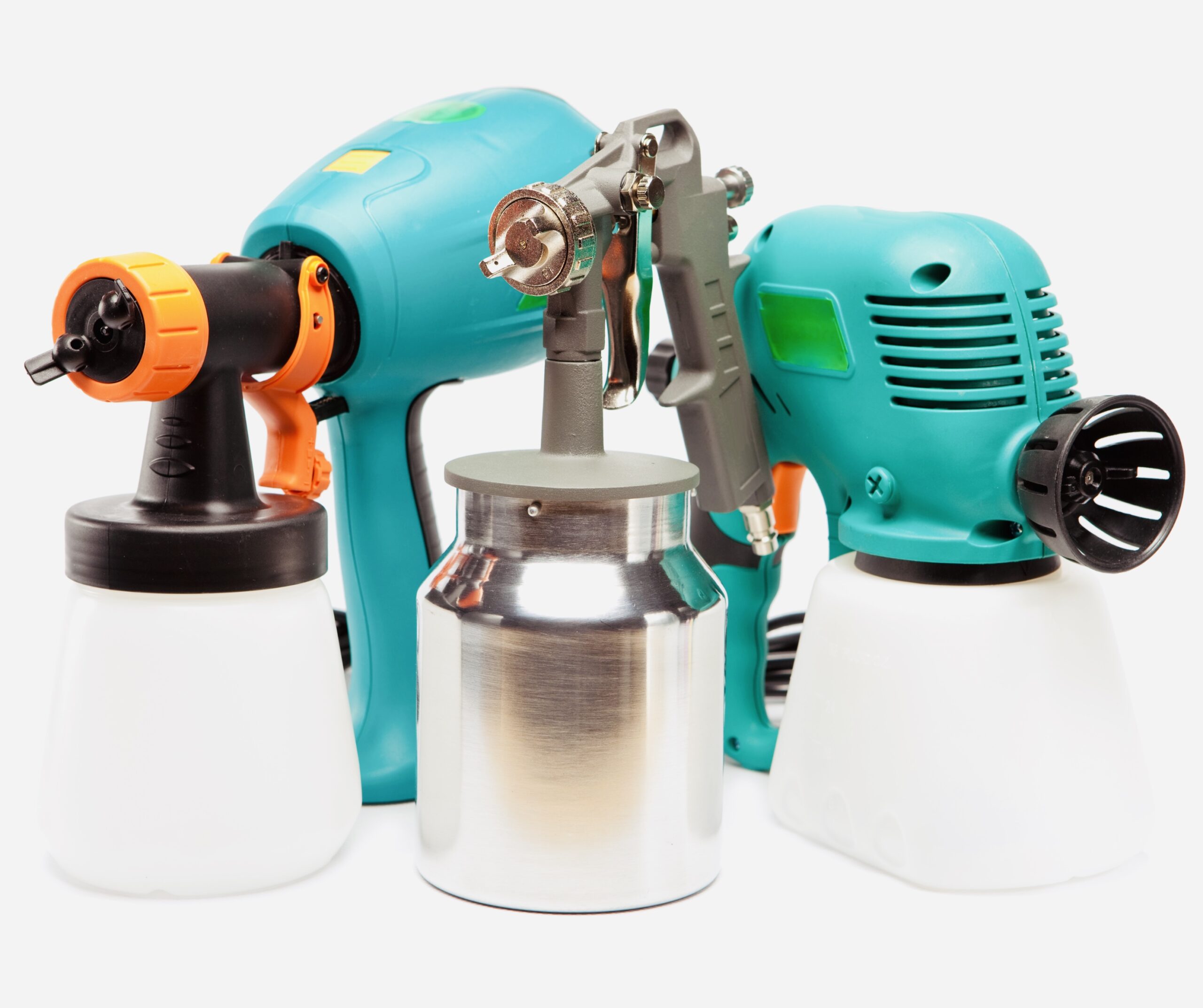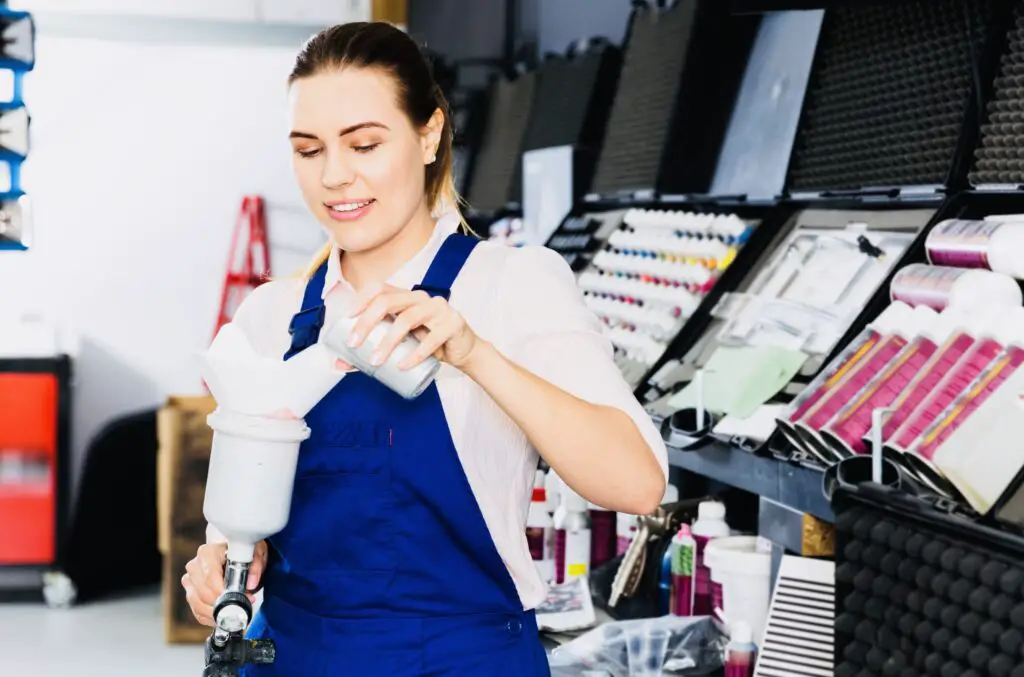Exploring the World of Painting: A Comprehensive Guide to Types Of Spray Gun For Painting
When it comes to painting, the tools you choose can significantly impact the outcome of your project. Among the array of painting tools, spray guns stand out for their efficiency and versatility.

In this guide, we’ll dive into the Types Of Spray Gun For Painting, highlighting the key types that cater to various painting needs.
Benefits Of Choosing Spray Gun For Painting
Choosing a spray gun for painting offers several benefits that contribute to efficiency, precision, and overall project success.
Here are key advantages associated with opting for a spray gun:
Efficiency
- Uniform Coverage: Spray guns provide even and consistent paint application, ensuring a smooth and professional finish without streaks or brush marks.
- Faster Application: Spray guns cover larger surfaces quickly, reducing the overall painting time compared to traditional brushes or rollers.
Precision
- Detail Work: Spray guns excel at intricate detailing, making them ideal for projects that require precision and fine lines.
- Controlled Application: With adjustable settings, users can control the spray pattern, air pressure, and paint flow, achieving the desired results with greater accuracy.
Versatility
- Adaptability: Different types of spray guns cater to a variety of projects, from small-scale woodworking to large industrial applications, providing versatility in application.
- Suitable for Various Coatings: Spray guns can handle a range of coatings, including paints, stains, varnishes, and sealers, making them versatile for diverse projects.
Reduced Overspray
- Targeted Application: High Volume, Low Pressure (HVLP) and Low Volume, Low Pressure (LVLP) spray guns minimize overspray, allowing for more efficient use of paint and reduced waste.
- Cost-Effective: The controlled application of paint reduces the amount of material needed, resulting in cost savings over time.
Time Savings
- Quick Drying: The fine mist produced by spray guns promotes faster drying times, enabling users to apply additional coats or finish the project sooner.
- Large Surface Coverage: Airless spray guns, in particular, are efficient for covering extensive areas quickly, saving time on larger projects.
Professional Finish
- Smooth Surface: Spray guns create a smooth and even surface without the brushstrokes or roller textures often associated with traditional painting methods.
- Consistent Results: The controlled application ensures a professional-looking finish, enhancing the overall aesthetic appeal of the painted surface.
Ease of Use
- Reduced Fatigue: Spray guns are often lightweight and ergonomic, minimizing user fatigue during extended painting sessions.
- User-Friendly Controls: Most modern spray guns feature adjustable settings and user-friendly controls, making them accessible to both professionals and DIY enthusiasts.
Suitable for Various Surfaces
- Adherence to Contours: The fine mist from spray guns adheres well to various surfaces, including irregular shapes and contours, providing comprehensive coverage.
- Ideal for Textured Surfaces: Spray guns effectively cover textured surfaces, ensuring an even coat on materials such as stucco or textured walls.
In short, choosing a Spray Gun For Painting not only streamlines the painting process but also enhances the quality and efficiency of the final result. Whether you’re tackling small-scale projects or large industrial endeavors, the benefits of using a spray gun contribute to a more professional and satisfying painting experience.
Types Of Spray Gun For Painting
Spray guns have revolutionized the way we apply coatings, offering precision and speed. Understanding the nuances of different types can empower you to make informed choices for your specific projects.\
HVLP (High Volume, Low Pressure) Spray Guns
HVLP spray guns are synonymous with efficiency. Their unique design utilizes lower air pressure to atomize paint, resulting in reduced overspray and minimal waste. This makes them ideal for tasks requiring precision, such as automotive painting and intricate furniture finishing.
Advantages of HVLP
- Enhanced efficiency with reduced overspray.
- Ideal for achieving a smooth, high-quality finish.
- Suitable for both professional and DIY applications.
Applications
HVLP spray guns excel in tasks demanding finesse, making them a top choice for professionals and hobbyists alike.
LVLP (Low Volume, Low Pressure) Spray Guns
Similar to HVLP guns, LVLP spray guns operate with lower air volume. This design makes them energy-efficient and perfect for smaller projects where a finer finish is paramount. Woodworking and smaller-scale applications often benefit from the precision and control offered by LVLP spray guns.
Advantages of LVLP:
- Energy-efficient design with lower air volume.
- Well-suited for detailed work on smaller surfaces.
- Versatile and popular in woodworking projects.
Applications
LVLP spray guns find their niche in tasks demanding intricate detailing, making them a preferred choice for artisans and craftsmen.

Conventional Spray Guns
Conventional models stand out in the realm of traditional spray guns. These guns utilize higher air pressure to break down paint particles, allowing for faster application. Commonly employed for larger surfaces and industrial projects, conventional spray guns are a reliable choice for various applications.
Advantages of Conventional Spray Guns:
- Faster application due to higher air pressure.
- Versatile for covering larger surfaces efficiently.
- Widely used in industrial settings.
Applications
Conventional spray guns are well-suited for industrial painting projects and large-scale applications where speed is crucial.
Airless Spray Guns
For projects demanding a high-speed approach, airless spray guns take the spotlight. Unlike their counterparts, airless spray guns use high pressure to force paint through the nozzle, allowing for quick coverage of large areas. This makes them particularly effective for exterior painting and industrial applications.
Advantages of Airless Spray Guns
- Rapid coverage of large areas.
- Efficient for exterior painting and industrial projects.
- Suitable for high-viscosity coatings.
Applications
Airless spray guns find their forte in projects requiring swift coverage, such as painting large exteriors or industrial structures.
Gravity Feed vs. Siphon Feed Spray Guns
Within the world of spray guns, the design of the paint cup plays a crucial role. Gravity-feed spray guns feature a cup on top, facilitating a consistent paint flow and enhanced control. On the other hand, siphon feed spray guns have the cup underneath, providing versatility for various angles but potentially resulting in more overspray.
Advantages of Gravity Feed
- Consistent paint flow for better control.
- Ideal for projects demanding precision and detail.
Advantages of Siphon Feed
- Versatility in handling various angles.
- Suitable for tasks with less emphasis on overspray.
Applications
Choosing between gravity feed and siphon feed depends on the project requirements, with gravity feed excelling in precision work and siphon feed offering flexibility in diverse applications.
Tricks To Apply While Choosing Various Types Of Spray Gun For Painting
Selecting the right spray gun for painting involves considering several factors to ensure optimal results.
Here are some tricks and tips to keep in mind when choosing various types of spray guns:
Determine Project Requirements
Consider Project Scale
Assess the size of the project. Smaller projects may benefit from precision-focused guns like LVLP, while larger projects require the efficiency of airless spray guns.
Understand Coating Compatibility
Check Material Compatibility
Ensure that the spray gun is suitable for the type of coating you plan to use. Different guns may be designed for specific materials such as paints, stains, or sealers.
Assess Air Pressure Requirements
HVLP or Conventional
Decide between High Volume, Low Pressure (HVLP) or conventional spray guns based on your desired finish. HVLP guns operate at lower pressure, minimizing overspray, while conventional guns work at higher pressure for faster application.
Evaluate Nozzle Size
Adjust for Viscosity
Choose a spray gun with an appropriate nozzle size for the viscosity of your coating. Thicker materials may require larger nozzles to prevent clogging.
Consider Feed Type
Gravity or Siphon Feed
Evaluate the pros and cons of gravity feed and siphon feed systems. Gravity-feed guns provide better control and are ideal for precision work, while siphon-feed guns offer versatility for various angles.
By following these tricks in your decision-making process, you can confidently choose the right spray gun for your painting project, ensuring efficiency, precision, and, ultimately, a successful outcome.
Conclusion
In the dynamic realm of painting, the right spray gun can make all the difference. Whether you prioritize precision, speed, or versatility, there’s a spray gun tailored to meet your specific needs.
Understanding the intricacies of HVLP, LVLP, conventional, airless, and feed types empower you to elevate your painting projects to new heights. As you plan for your next painting endeavor, armed with the knowledge of these Spray Gun Types For Painting, your creations are bound to leave a lasting impression.
Happy Painting!

